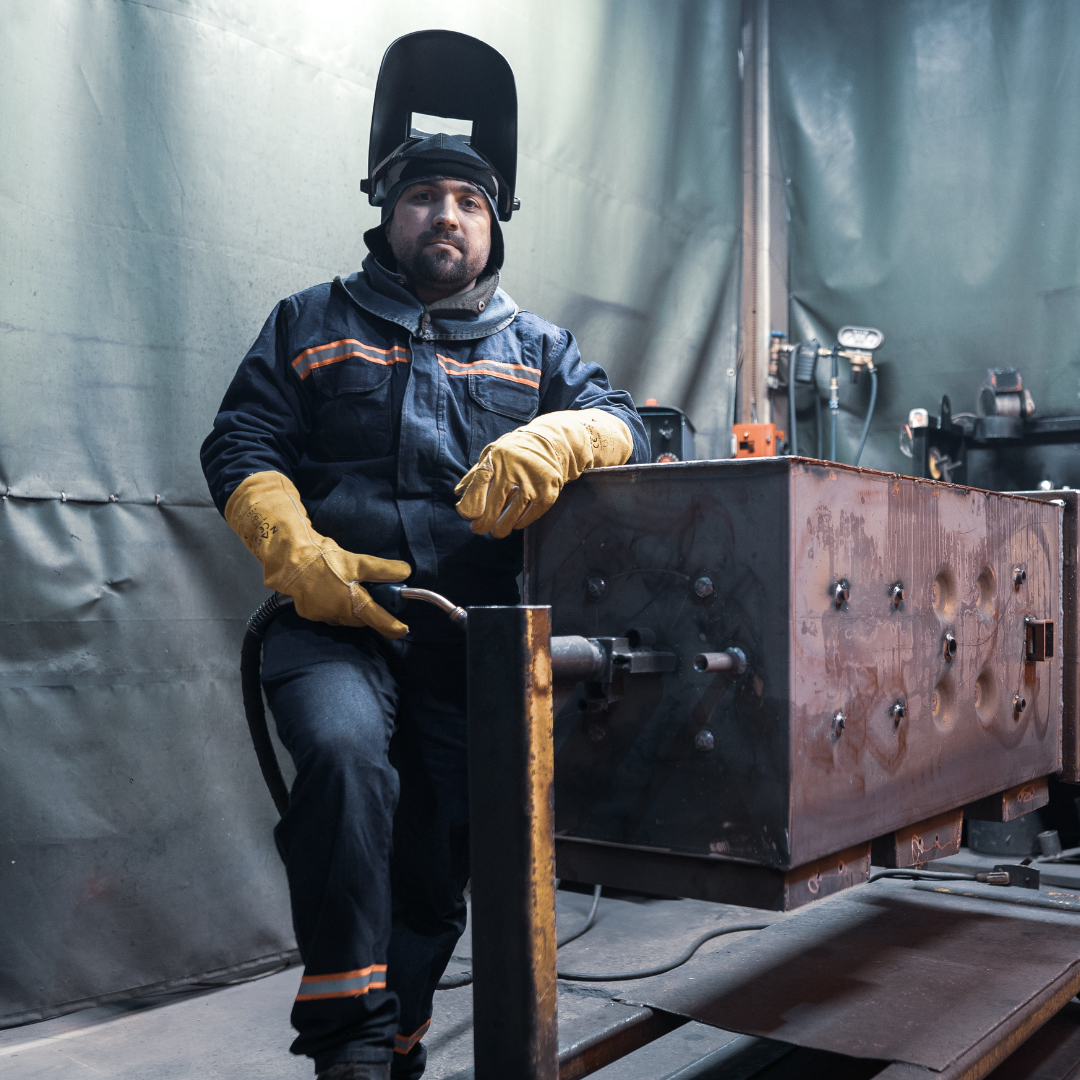In addition to providing a broader framework for protecting the workers’ rights to engage in union formation, the Industrial Relations Code 2020 directs reducing friction between employers and workers. It also provides standards for industrial dispute settlement.
The Industrial Relations Code Bill, 2020 was proposed for incorporating and simplifying the relevant provisions included in the Trade Unions Act - 1926, Industrial Disputes Act- 1947, and Industrial Employment (Standing Orders) Act - 1946.

The following points are covered in the article:
- Introduction
- Main Features of the Industrial Relations Code
- Industrial Relations Code Guidelines on Trade Unions
- How do Layoffs and Closures Work?
- Effect of Code on Right to strike
- Important Definitions
- Establishing a Grievance Redressal Committee
- Limiting Unjustified Lockouts and Strikes
- Establishing an Industrial Tribunal
- Raising the Wage Cap for Supervisory Employee
- Increasing the Limit for the Standing Order
- Raising the Threshold for Layoffs and Retrenchments in fixed Industrial Establishments
- Increasing the Limit for the Standing Order
- Raising the Threshold for Layoffs and Retrenchments in fixed Industrial Establishments
- Setting a Duration to Investigate any Misconduct by Employees
- Employee Re-skill Fund
- Benefits of Permanent Employees for Fixed-Term Workers
Introduction
The Parliament passed three codes on labor law, but many trade unions stood against the passing of the laws. The sector, however, appreciates and welcomes the laws as they are aimed towards reforming the labor laws. These were much-needed and awaited as the laws now introduce better social security, occupational safety, and working conditions. The newly-introduced laws also replace several other laws pertaining to the subject.
The Industrial Relations Code 2020 focuses on rejuvenating economic growth and works for the upliftment of the employees from the restrictions laid down by the previous labor laws.
Main Features of the Industrial Relations Code
The Industrial Relations Code is a combination of the 3 laws namely the:
- the Trade Unions Act, 1926
- the Industrial Employment (Standing Orders) Act, 1946
- the Industrial Disputes Act, 1947
In addition to all workers employed in a skilled or unskilled capacity, technical, operational, or clerical capacity, staff in supervisory roles are also included. Through 'fixed term employment,' employers are given the flexibility to hire workers based on their needs through written contracts. A fixed-term employee should receive the same benefits as a permanent employee, including the same work hours, wages, allowances, and other benefits, including statutory benefits, such as gratuities.
The Code says any establishment with 300 employees or more workers must prepare standing orders relating to the classification of workers. The company must also intimate the duration and hours of work, holidays, paydays, shifts, attendance, conditions for leave, termination of employment, or suspension. Additionally, they should be informed about grievance procedures. It was initially applied to companies with 100 or more employees under the 2019 Bill. The 2020 Code raises the threshold to 300. Suppose the appropriate government, such as the Centre or the State, is satisfied that adequate provisions exist to meet the objectives of the Code. In that case, it has the power to exempt, with or without conditions, any industrial establishment or class of industrial establishments from any or all of its provisions.
Industrial Relations Code Guidelines on Trade Unions
There could be a company or establishment with more than one trade union. In such a case, the trade union with 51% or more members in an establishment will be given exclusive negotiating power over the other unions. This requirement was lowered from the earlier 75% in 2019. An employer must create a ‘negotiating council’ if no union qualifies under this criterion, consisting of representatives of all unions that represent at least 20% of employees.
How do Layoffs and Closures Work?
For layoffs, retrenchments and closures, the government must give prior approval only in cases where establishments had engaged 300 or more workers on average per working day in the previous 12 months. This threshold may also be raised by notice from the government under the Code. Layoffs that are made without permission or made despite the refusal of permission are considered illegal. However, this will not stand true if an alternative employment was offered that does not require any special skills or undue hardship for the employee.
Those who have served continuously for a year or more are entitled to a notice period, or to payment instead of notice, and prior government permission before they are retrenched. Similarly, prior approval is required for the closure of a unit; the application must be submitted 90 days prior to the planned closure.
Effect of Code on Right to strike
All industrial establishments are prohibited from striking or locking out without prior notice under the Code. In breach of contract, no unit shall strike without notifying 60 days before the strike, within 14 days of receiving notice, or before the expiration of the notice of strike. The strike must also end within seven days of the conclusion of any conciliation proceeding. Alternatively, it should end after the conclusion of industrial tribunal proceedings or during arbitration proceedings, or during proceedings before an industrial tribunal.
A lockout announcement by the employer is also restricted. The Industrial Disputes Act, 1947, had restricted the right to announce strikes only in relation to public utilities. Today's Code extends that right to all businesses.
Important Definitions
There has been an amendment in the definitions of the key terms after the introduction of the Industrial Relations Code 2020.
Industry
The industry refers to any systemic interaction between employers and employees for the purpose of producing, supplying, or distributing goods and services, whether this activity is driven by profit or capital investment. The new definition of the industry includes hospitals, educational institutions, and scientific institutions.
The following are not characteristics of an industry:
- A charitable, social, or philanthropic institution-owned or operated by a charitable, social, or philanthropic organization
- Activities on a domestic level
- Various departments of the federal government conduct research on atomic energy, space, and defense
- Other activities that have not been approved for inclusion in an industry by the federal government
Worker
Within the new definition of a worker, the following are included:
- Journalists employed by newspapers as defined by the Working Journalists and Other Newspaper Employees and Miscellaneous Provisions Act, 1955
- Supervising employees who make less than INR 18,000 a month
- Employees who are engaged in sales promotion, as defined by the Sales Promotion Employees (Conditions of Service) Act, 1976
Employer
Among the new definitions of the employer are:
Contractors
- who represent deceased employers legally
- A manager of a factory, as defined in the Factories Act, 1948
- Anyone in full control of an establishment (manager or managing director)
Industrial dispute
A dispute or difference arising between an employee and employer relating to the discharge, dismissal, retrenchment, or termination of an employee is included within this new definition.
Fixed-term worker
The following have been added to the definition of a fixed-term worker:
- There will be no difference between the working hours or duration, wages, or other benefits offered to permanent employees performing the same or similar work.
- The recipient is eligible for gratuity if the services have been provided for one year.
- Irrespective of how long the employment period extends, statutory benefits will be granted in proportion to the services provided.
Establishing a Grievance Redressal Committee
The Industrial code mentions that any establishment with over 20 employees must have a grievance redressal committee of a maximum of 10 members. This committee will be in charge of the resolution of the disputes. The number of people representing employers, employees, and women employees must be equal.
Women workers should be represented in the committee to the same degree as their proportion in the total number of workers in a company. Companies that fail to establish a GRC may be fined up to INR 100,000 (US$1,371).
Committees are permitted to hear grievances from one party for one year. A grievance that is unresolved or in which an employee is declared aggrieved by the committee will no longer be the responsibility of that establishment. Employees may initiate conciliation proceedings.
Establishing a Negotiating Council
A single negotiating union or council must be set up in all establishments with a registered trade union. These councils are in charge of handling all matters that the IR Code defines.
When only one trade union represents the employees of an establishment, that trade union is recognized as the only negotiating union for those employees.
Among establishments with more than one registered union, the union that is made up of at least 51 percent of the employees will be regarded as the sole negotiating union of the employees.
There are establishments that have multiple functioning registered trade unions. If none of the unions constitute 51 percent or more, the negotiation council must be set up with a minimum of 20 percent of the total number of employees employed by the company.
Limiting Unjustified Lockouts and Strikes
Strikes are defined as a concerted or mass leave of more than 50% of an organization's employees, occurring on any working day. Under the IR Code, only workers employed by public utilities (water, electricity, gas) may go on strike on the 14th day of their 42-day advance notice of strike.
Strikes by other workers in industrial establishments are also prohibited:
- Within 60 days of the strike notice; or
- 14 days prior to giving the notice of strike; or
- before the strike date mentioned in the notice; or
- at any time during the conciliation process;
- within seven days after the conciliation has ended; or
- at any time during a pending arbitrary hearing;
- within sixty days after the conclusion of an arbitrary hearing;
- Whenever awards or settlements are in progress in such matters
- In the case of the above conditions being met, no employer shall be able to lock out their employees or deny them employment.
Establishing an Industrial Tribunal
IR Code calls for the creation of the National Industrial Tribunal. It prescribes forming one or more industrial tribunals to handle industrial disputes. There will be new tribunals created to substitute for the existing labor courts, inquiry courts, and conciliation boards that were part of the Industrial Disputes Act.
The tribunals will include:
- Appointment of two members by the federal government
- A judicial and administrative member appointed by an appropriate government body
Furthermore, the federal government has the authority to establish more than one National Industrial Tribunal. This will be in view of the importance of adjudicating industrial disputes on a national scale. To resolve disputes of Industrial establishments located in one or more states, they may need to approach the national-level tribunal.
Raising the Wage Cap for Supervisory Employee
A supervisory employee is an individual with the authority to hire, promote, award, transfer, recall, lay off, suspend, and discipline other employees.
As per the IR Code, all supervisory employees earning between INR 10,000-18,000 are considered working employees. Employers can terminate their employees' services by fulfilling similar retrenchment requirements as they would any other employee.
Increasing the Limit for the Standing Order
The IR Code permits only industrial establishments covered by The Industrial Employment (Standing Orders) Act, 1946. Additionally, they must have at least 100 employees to create standing orders (CSO). While some states allow establishments with fewer than 50 employees to be eligible for CSOs, others have increased it to 300 or more employees.
Moreover, certain commercial establishments which were beyond the scope of industrial establishment under the Standing Orders Act may now be covered due to a wider definition under the IR Code. Standing orders may also be required.
Through the removal of the CSO requirement for new or smaller industrial establishments, the IR Code creates uniformity for establishments with operations in multiple states, thereby, simplifying compliance for these establishments.
The following matters must be addressed in standing orders for establishments with 300 employees:
- Employee classification: temporary, permanent, fixed-term, and so on
- Time and holiday assignments
- Shift work, or providing customer service round the clock, seven days a week
- Handling late arrivals and attendance
- Various processes of determining the conditions, procedures, and authority for granting leave
- Entering premises through certain gates and being subject to search
- Reporting, suspending, and closing parts of an establishment as well as determining the rights and liabilities of the employer and employee
- How and when employers and employees should give notice of termination
- Terminating or suspending employees for misconduct and determining what constitutes misconduct
- Compensating unfairly treated employees
- Any other significant issue
The federal government must develop models of standing orders relating to conditions of service and relative terms. The model standing order of the federal government shall be deemed to have been certified when the employer adopts the model standing order in relation to matters relevant to the industrial establishment. In accordance with the law or state authority, the employer must take this development forward to the concerned certifying officer.
Raising the Threshold for Layoffs and Retrenchments in fixed Industrial Establishments
The Industrial Disputes Act required industrial establishments with over 100 employees to obtain the permission of the appropriate government body before laying off or retrenching their employees.
Under the Industrial Relations Code, this requirement has been waived off. The industrial establishments include mines, factories, and plantations that require government approval to lay off employees. This is applicable if on their average working day they employed at least 300 people in the preceding year.
Raising the threshold will ensure uniformity across all states. Furthermore, it enhances the capacity of employers to hire more employees by providing them with operational independence.
Government approval isn't required in the event of power outages or natural disasters, or in the event of floods, explosions, or excessive inflammable gas in mines. However, if the communication from the government is not clear within a period of 60 days since the filing of the application, the application is deemed to have been approved for these 60 days and discarded.
Setting a Duration to Investigate any Misconduct by Employees
The IR code prescribes a 90 days time duration for the investigation of misconduct of a suspended employee. This has been done to maintain and ensure fair treatment to all employees.
Employee Re-skill Fund
The employee re-skill fund is created with an aim to give laid-off employees an opportunity to undertake new skills. This would, in turn, help them equip them to secure new jobs. The fund will be utilized by crediting the bank accounts of the laid-off employees with wages equivalent to 15 days of work, and this will be done within 45 days of retrenchment.
This is what the fund will comprise in accordance with the IR Code:
- The employer will contribute an amount equivalent to 15 days’ wages as last drawn by the employee before retrenchment. Alternatively, any other number of days can be considered as prescribed by the federal government applicable only for retrenched workers
- There could be a contribution from other sources as guided and found appropriate by the government
Benefits of Permanent Employees for Fixed-Term Workers
The IR Code prescribes that the fixed-term workers that require CSO can receive benefits as that of permanent employees. These benefits include gratuity if they have covered 1 year of service.
How can Deskera Help You?
Employee management can be tough owing to an array of aspects to attend to. If you are looking for a holistic and automated tool to manage payroll, employees, expenses, contractor management, Deskera People could be the answer.
Now, payroll processing is easy in just 3 simple steps.

Key Takeaways
Let’s walk through the important points from the article:
- The Industrial Relations Code 2020 directs reducing friction between employers and workers
- The Industrial Relations Code Bill, 2020 simplifies and incorporates important provisions from Trade Unions Act - 1926, Industrial Disputes Act- 1947, and Industrial Employment (Standing Orders) Act - 1946
- The Industrial Relations Code 2020 focuses on rejuvenating economic growth and works for the upliftment of the employees from the restrictions laid down by the previous labor laws
- Through 'fixed term employment,' employers are given the flexibility to hire workers based on their needs through written contracts
- The Code says any establishment with 300 employees or more workers must prepare standing orders relating to the classification of workers
- For layoffs, retrenchments and closures, the government must give prior approval only in cases where establishments had engaged 300 or more workers on average per working day in the previous 12 months
- All industrial establishments are prohibited from striking or locking out without prior notice under the Code
- A lockout announcement by the employer is also restricted
- The industry refers to any systemic interaction between employers and employees for the purpose of producing, supplying, or distributing goods and services, whether this activity is driven by profit or capital investment
- Workers is a term referred to indicate employees like journalists, supervising employees, and employees in sales promotion activities
- Employers are contractors who represent deceased employer legally, a factory manager, or a managing director/ director of an establishment
- A dispute or difference arising between an employee and employer relating to the discharge, dismissal, retrenchment, or termination of an employee is included within this new definition
- The Industrial code mentions that any establishment with over 20 employees must have a grievance redressal committee of a maximum of 10 members which will be in charge of resolving disputes
- A single negotiating union or council must be set up in all establishments with a registered trade union
- Strikes are defined as a concerted or mass leave of more than 50% of an organization's employees, occurring on any working day
- Under the IR Code, only workers employed by public utilities (water, electricity, gas) may go on strike on the 14th day of their 42-day advance notice of strike
- IR Code calls for the creation of the National Industrial Tribunal to handle industrial disputes
- A supervisory employee is an individual with the authority to hire, promote, award, transfer, recall, lay off, suspend, and discipline other employees
- Raising the threshold for lay-offs and retrenchments will ensure uniformity across all states
- Through the removal of the CSO requirement for new or smaller industrial establishments, the IR Code creates uniformity for establishments with operations in multiple states, thereby, simplifying compliance for these establishments
- The IR code prescribes a 90 days time duration for the investigation of misconduct of a suspended employee
- The employee re-skill fund is created with an aim to give laid-off employees an opportunity to undertake new skills
- The IR Code prescribes that the fixed-term workers that require CSO can receive benefits as that of permanent employees
Related Articles














